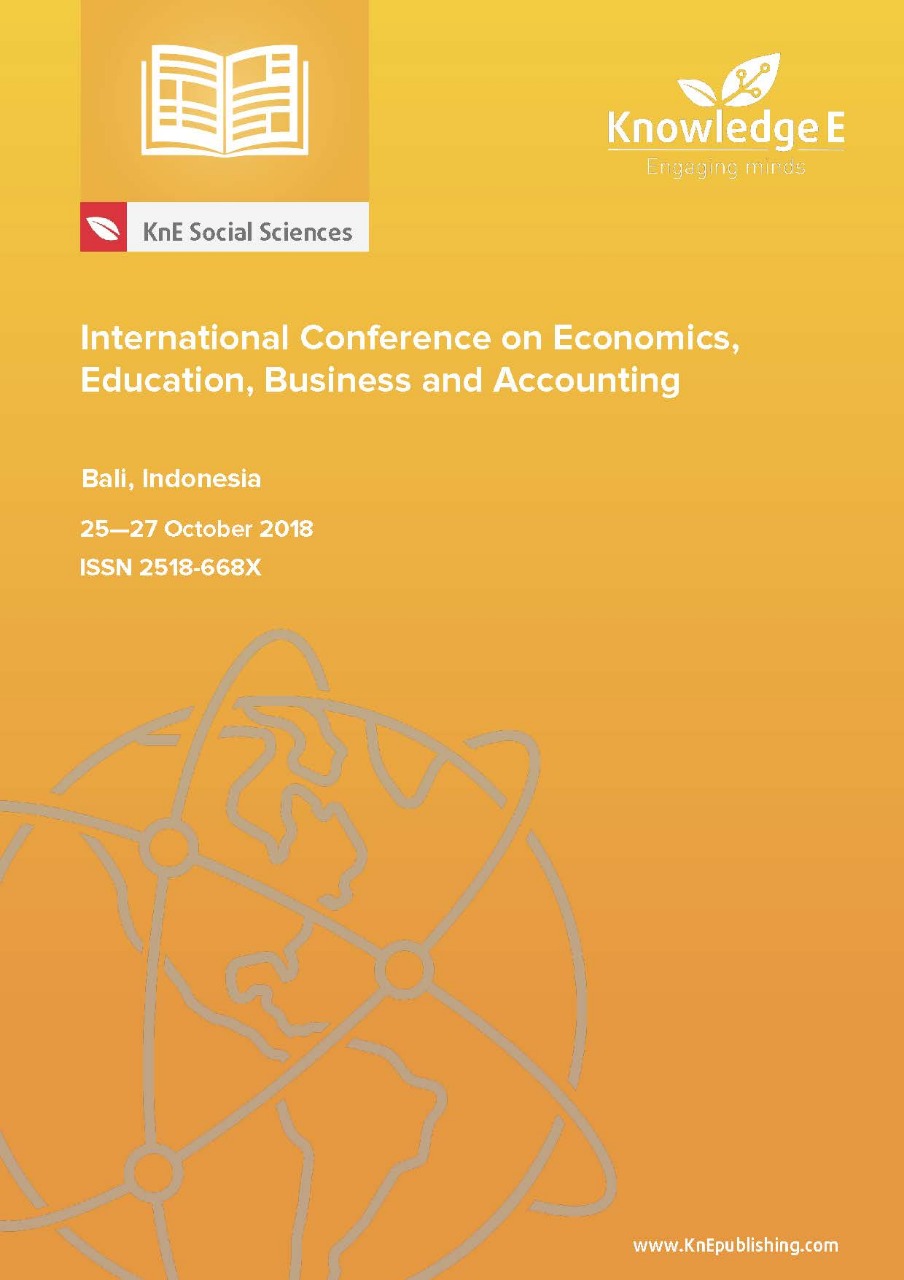The Role of Business Simulator Games Implementation in Improving the Ability of Analysis and Business Decision Making Independently for Students (Literature Research)
DOI:
https://doi.org/10.18502/kss.v3i11.4067Abstract
Business simulator applications that have the purpose of effective learning media in terms of training and enhance constructive and transformative abilities of students to conduct business analysis and decision making for business management students. So, students can understand what will happen in the industry and be able to make the right business decisions. Based on the implementation of business simulator applications to business management students that occur, it shows that this business simulator application effectively increases the ability of students to analyze business cases and make decisions that are profitable for their business. The role of business simulator games application can make students experience problems directly, so they can learn to make the right decisions in accordance with the conditions or cases that occur.
Keywords: Analysis Ability, Business Decision Making, Business Simulator Application, Learning Media Innovation.
References
Assauri, S . 1990. Manjemen Pemasaran Dasar , Konsep, dan Strategi. Jakarta: Rajawali.
Bovee, Courland. 1997. Business Communication Today. Prentice Hall : New York.
Brown, D.M., Robson, A., Charity, I., 2018. International Masters’ student perspectives of team business simulations. Int. J. Manag. Educ. https://doi.org/10.1016/j.ijme.2018. 11.004
Buchari, Alma. 2007. Pengantar Bisnis. Edisi Revisi, cetakan kesembilan. Bandung : Alfabeta.
Buckingham, D., 2007. Media education goes digital: an introduction. Learn. Media Technol. 32, 111–119. https://doi.org/10.1080/17439880701343006
Cooper, R.G., Kleinschmidt, E.J., 1986. An Investigation into the New Product Process: Steps, Deficiencies, and Impact. J. Prod. Innov. Manag. 3, 71–85. https://doi.org/10. 1111/1540-5885.320071
Danielsson, K., Wiberg, C., 2006. Participatory design of learning media: Designing educational computer games with and for teenagers. Interact. Technol. Smart Educ. 3, 275–291. https://doi.org/10.1108/17415650680000068
De Freitas, S., Griffiths, M., 2008. The convergence of gaming practices with other media forms: what potential for learning? A review of the literature. Learn. Media Technol. 33, 11–20. https://doi.org/10.1080/17439880701868796
García-Peñalvo, F.J., Conde, M.Á., 2014. Using informal learning for business decision making and knowledge management. J. Bus. Res. 67, 686–691. https://doi.org/10. 1016/j.jbusres.2013.11.028
Hernández-Lara, A.B., Perera-Lluna, A., Serradell-López, E., 2018. Applying learning analytics to students’ interaction in business simulation games. The usefulness of learning analytics to know what students really learn. Comput. Hum. Behav. https: //doi.org/10.1016/j.chb.2018.03.001
Hoelscher, J., Mortimer, A., 2018. Using Tableau to visualize data and drive decisionmaking. J. Account. Educ. 44, 49–59. https://doi.org/10.1016/j.jaccedu.2018.05.002
Kirkwood, A., Price, L., 2014. Technology-enhanced learning and teaching in higher education: what is ‘enhanced’ and how do we know? A critical literature review. Learn. Media Technol. 39, 6–36. https://doi.org/10.1080/17439884.2013.770404
Kohavi, R., Rothleder, N.J., Simoudis, E., 2002. Emerging trends in business analytics. Commun. ACM 45. https://doi.org/10.1145/545151.545177
Miller, D., 1988. Relating Porter’s Business Strategies to Environment and Structure: Analysis and Performance Implications. Acad. Manage. J. 31, 280–308. https://doi. org/10.5465/256549
Pimmel, R, dkk. 2009. Instructional Modules for Teaching Written, Oral, and Graphical Communication Skills to Engineering Students. Proceeding of Southeastern Section of ASEE Annual Conference.
Sadiman, Arief S, dkk. (2006). Media Pendidikan. Jakarta: PT Raja Grafindo Persada.
Sproten, A.N., Diener, C., Fiebach, C.J., Schwieren, C., 2018. Decision making and age: Factors influencing decision making under uncertainty. J. Behav. Exp. Econ. 76, 43–54. https://doi.org/10.1016/j.socec.2018.07.002
Trkman, P., McCormack, K., de Oliveira, M.P.V., Ladeira, M.B., 2010. The impact of business analytics on supply chain performance. Decis. Support Syst. 49, 318–327. https://doi.org/10.1016/j.dss.2010.03.007
Tseng, M.-L., Chiu, A.S.F., Liang, D., 2018. Sustainable consumption and production in business decision-making models. Resour. Conserv. Recycl. 128, 118–121. https: //doi.org/10.1016/j.resconrec.2017.02.014
Venkatesh, V., Davis, F.D., 1996. A Model of the Antecedents of Perceived Ease of Use: Development and Test. Decis. Sci. 27, 451–481. https://doi.org/10.1111/j.1540- 5915.1996.tb00860.x
Willett, R., 2007. Technology, pedagogy and digital production: a case study of children learning new media skills. Learn. Media Technol. 32, 167–181. https://doi. org/10.1080/17439880701343352
www.bps.go.id

